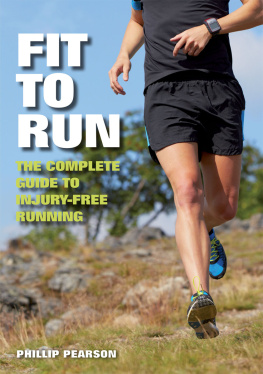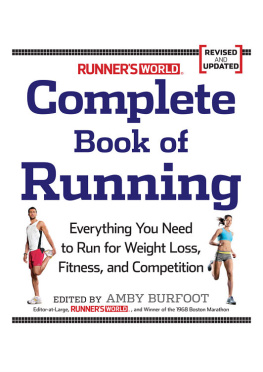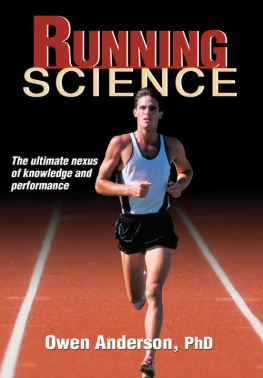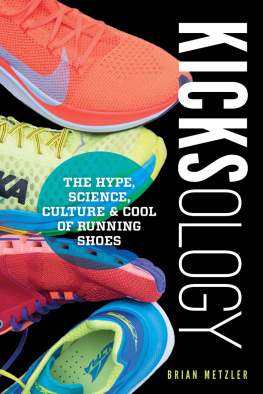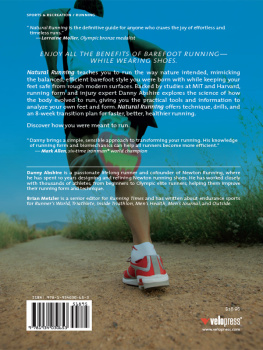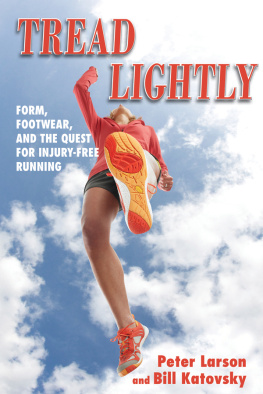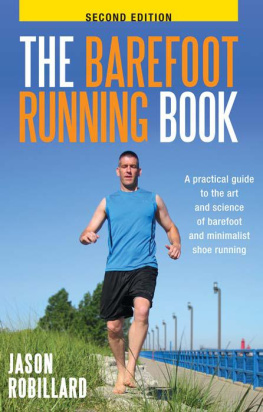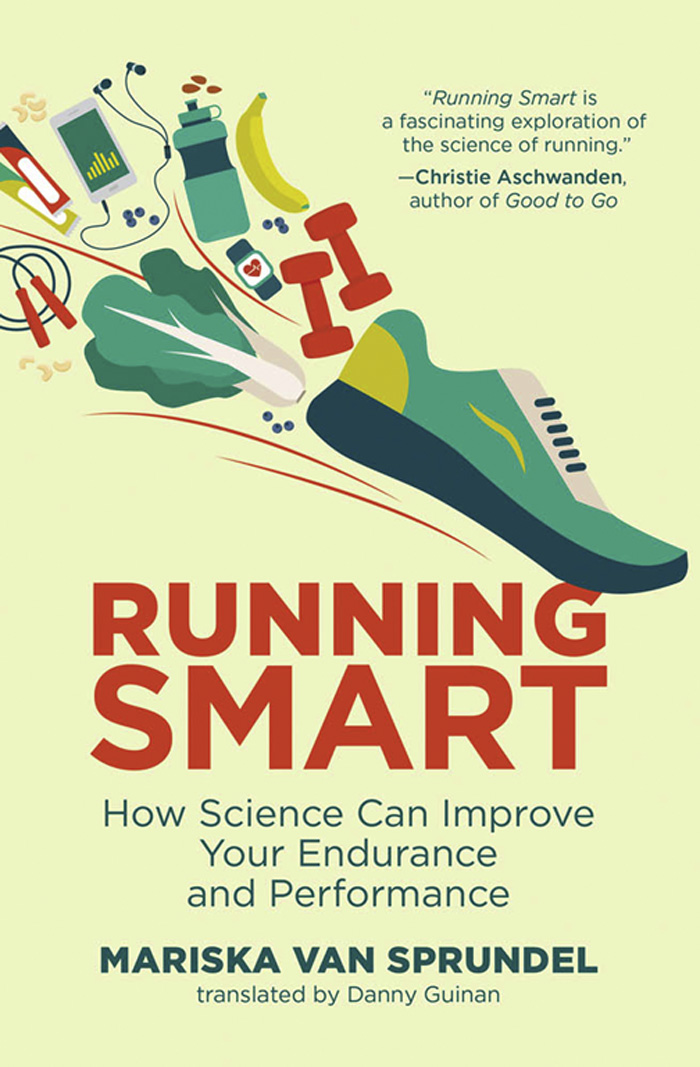
Running Smart
Running Smart
How Science Can Improve Your Endurance and Performance
Mariska van Sprundel
translated by Danny Guinan
The MIT Press Cambridge, Massachusetts London, England
2018 M. van Sprundel / Amsterdam University Press B.B., Amsterdam 2018
This translation 2021 Massachusetts Institute of Technology
This publication has been made possible with financial support from the Dutch Foundation for Literature.

All rights reserved. No part of this book may be reproduced in any form by any electronic or mechanical means (including photocopying, recording, or information storage and retrieval) without permission in writing from the publisher.
This book was set in ITC Stone and Avenir by New Best-set Typesetters Ltd.
Library of Congress Cataloging-in-Publication Data
Names: Sprundel, Mariska van, author.
Title: Running smart : how science can improve your endurance and performance / Mariska van Sprundel ; translated by Danny Guinan.
Other titles: Alles wat je wilt weten over hardlopen. English
Description: Cambridge, Massachusetts : The MIT Press, 2021. | Includes bibliographical references and index.
Identifiers: LCCN 2020029795 | ISBN 9780262542449 (paperback)
Subjects: LCSH: RunningTraining. | RunningPhysiological aspects. | Running races. | Endurance
Classification: LCC GV1061.5 .S6713 2021 | DDC 796.42071dc23
LC record available at https://lccn.loc.gov/2020029795
10 9 8 7 6 5 4 3 2 1
d_r0
Contents
Preface
No amount of belief makes something a fact.
James Randi, pseudoscience skeptic
In the spring of 2016, I found myself standing on a beach among a crowd of spectators cheering on 17,000 runners during the Egmond half marathon, including a group of runners from my own running club in Utrecht in the Netherlands. A few weeks earlier I had come down with a shin injury, not realizing at the time that it would literally put me out of the running for a couple of months. I was bitterly disappointed. Egmond is the highlight of the year at our club and I wasnt taking part. Instead I was standing on a beach in the freezing cold, doing my best to muster some enthusiasm for my colleagues. I didnt know whether to laugh or cry. But cheering your friends on is better than staying home and sulking, of course. You get caught up in the excitement of the event and want to be there for your fellow runners. At the same time, I was very jealous. Everyone was running except me. Still, there was some cold comfort in the fact that the 2016 race would be remembered as one of the most difficult in living memory because of the terrible weather conditions. Everywhere I looked, I saw runners grimacing from the effort of trying to cope with the ferocious head wind and the sand blasting their faces. It didnt look like much fun, to be honest. In fact, I couldnt have picked a better year to get injured.
As the runners passed by, I observed the various techniques on display. Those out in front ran a lot differently from those at the rear ambling along just ahead of the safety car. The runners at the back of the field also wore warmer clothing. Some listened to music as they ran, others kept looking at their watches. Some waved breezily at the crowd cheering them on, while others were the picture of focus and concentration. Running gels were being consumed in abundance. One thing that intrigued me was the incredible variety of footwear. Everything from simple sneakers with thin soles to hi-tech running shoes in blindingly florescent colors. Every now and then someone ran by wearing so-called FiveFingers shoes, with individual pockets for the toes. Some wore no shoes at all, their bare feet sinking deep into the ice-cold sand. Chilled to the bone, I watched the colorful parade of runners as they passed by, and it was there, on the beach in Egmond, that the idea of writing this book was born. The world of running is awash with assumptions, rituals, and stories related to nutrition, shoes, mental strength, and injuries. The stories are generally passed on from runner to runner, and almost everyone has the same store of knowledge and knows whats good for you and whats not. Up until 2016 I had not given any of this much thought. I only started running in my twenties and had always accepted traditional running wisdom more or less as fact.
The science journalist in me sprang into action that year at the half marathon in Egmond. The first question that came to mind was: is everything we hear about running really true? I had just suffered another in a long line of injuries, even though I believed I was doing everything by the book. This got me thinking: Can good running shoes prevent injury? Is it better to run with a higher stride frequency or to take longer strides? Does beetroot juice boost your performance? When I recently became a trainer at my running club, I started paying more attention to what works and what doesnt. This sparked a personal crusade to discover the science behind running. My questions led me to interview experts across a broad range of disciplines. I had my own running technique examined in an exercise lab and immersed myself in the scientific literature. Running Smart contains many insights from the world of sports science that will interest both recreational and professional runners. Some chapters offer practical advice, while others address the relationship between running and the human body. For example, is every kind of body suited to running? How often do you need to run in order to stay healthy? And how does jogging help to alleviate stress?
I wrote the bulk of this book in Boston and Cambridge, Massachusetts, where I spent six months working in 2016 and 2017. Boston is a mecca for runners. The historical city is famous for hosting the worlds oldest annual marathon, which is also one of the Abbott World Marathon Majors (the other five being Tokyo, London, Berlin, Chicago, and New York City). My dream is to run the Boston Marathon someday. Boston and Cambridge are great places not only for running but also for science and technology, and I made good use of the fact that Harvard University and Harvard Medical School were only a ten-minute bike ride from where I lived. This made it a lot easier for me to visit people like evolutionary biologist Daniel Lieberman, who believes that humans were born to run, and biomechanical engineer Irene Davis, who examines running techniques in her exercise lab. Their research is addressed extensively in this book. One thing I quickly discovered is that there is often a discrepancy between the facts and accepted wisdom. Athletics is a minefield of ritual and tradition, and running is no exception.
While reading this book, it may be useful to keep in mind that scientific research is usually based on groups and not on individuals. The individual runner, with all their personal and physical traits, is not the same person as the average test subject in a study. As a result, you may wonder just how applicable some scientific findings are in real life. Treating injuries, combatting depression, finding the right running shoes, and preventing training overload all demand a made-to-measure approach to the individual runner and their situation. Nevertheless, there is still plenty of knowledge, for example with regard to running techniques and nutrition, that applies to almost everyone.
I am under no illusion that what I have discovered along the way will keep me injury-free for the rest of my running life. However, the next time Im at a party I will be able to be the smarty-pants thanks to my newly acquired arsenal of information on shoes and stretching exercises. And pretty soon, so will you.
Next page

